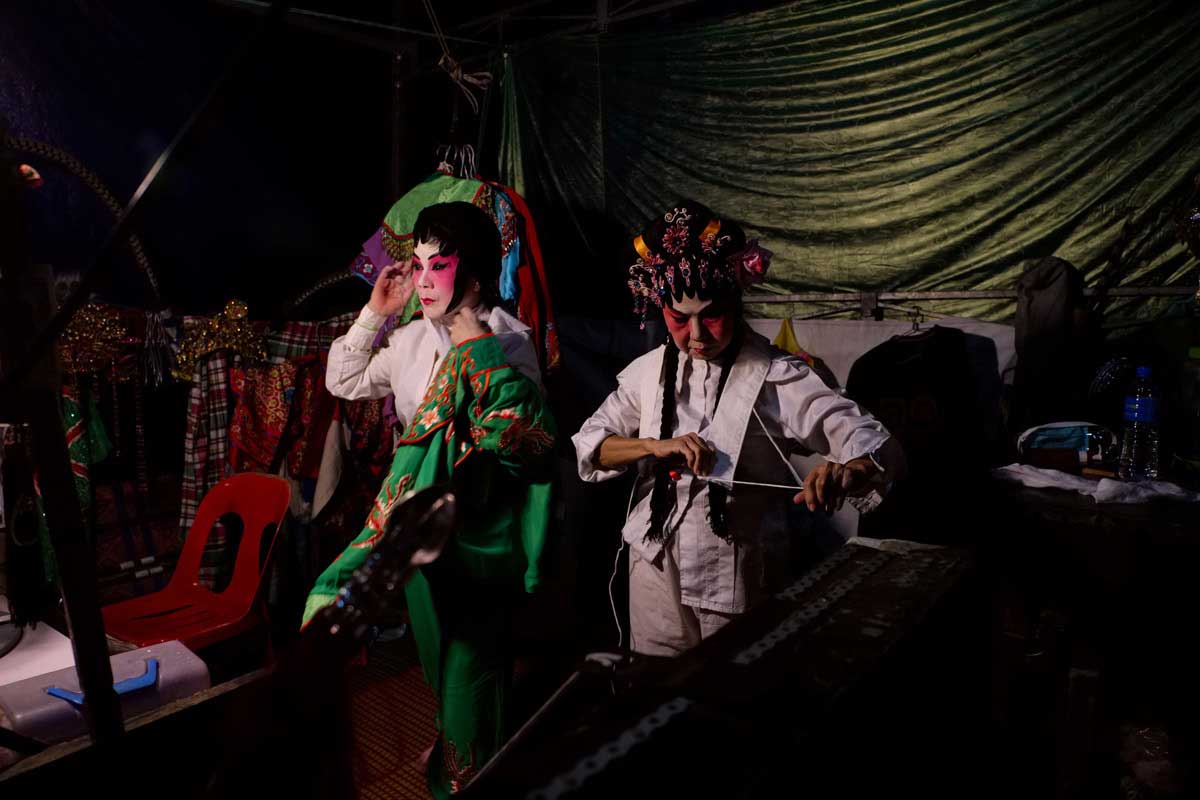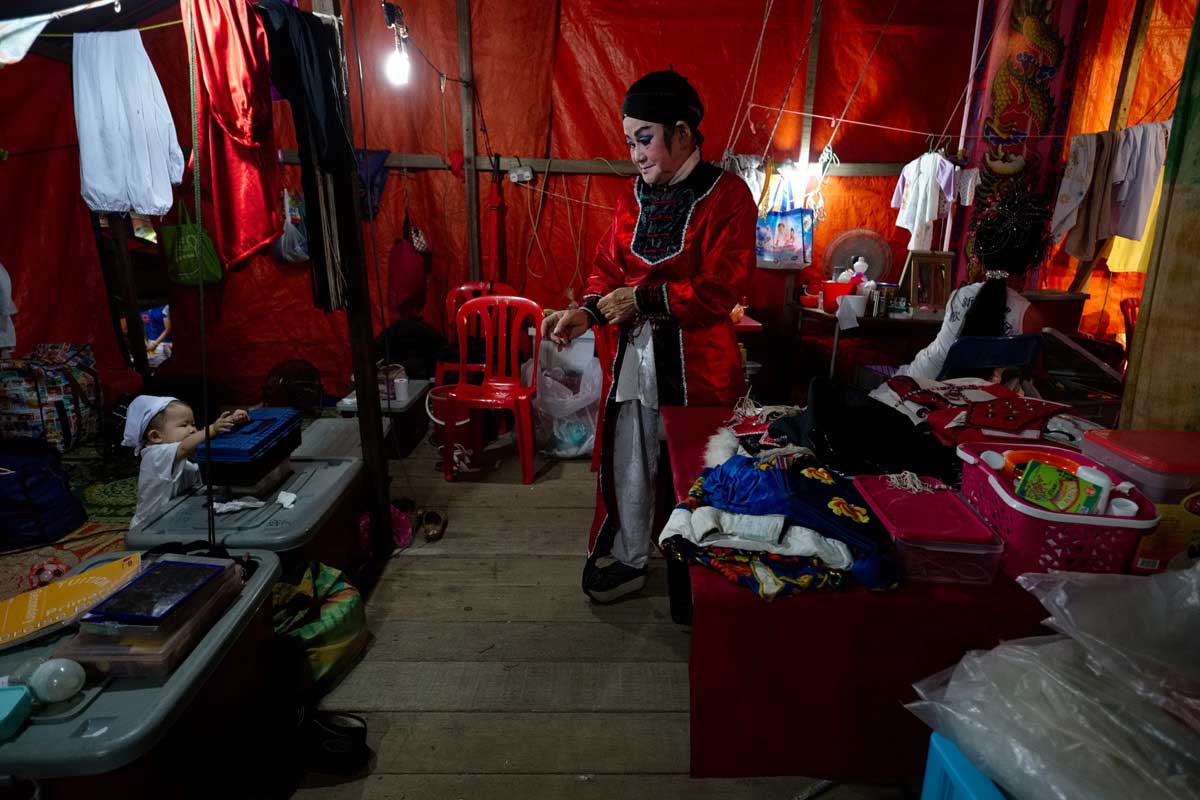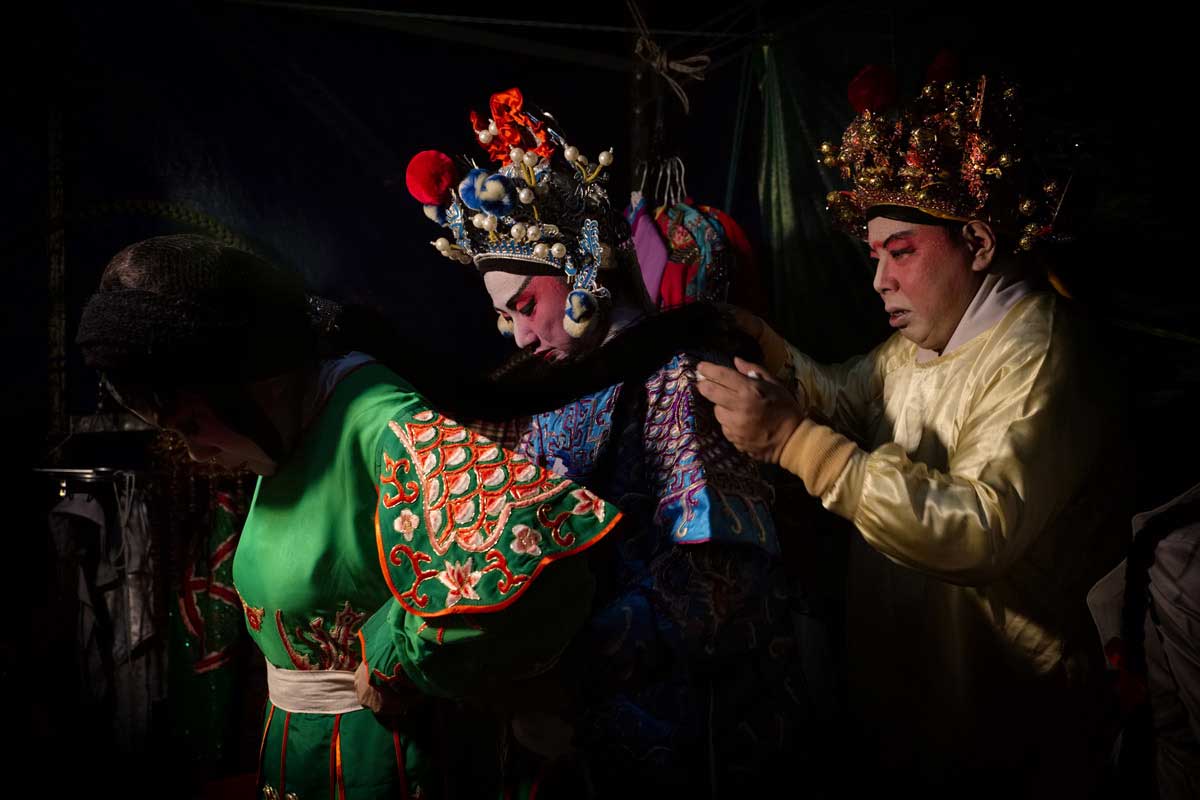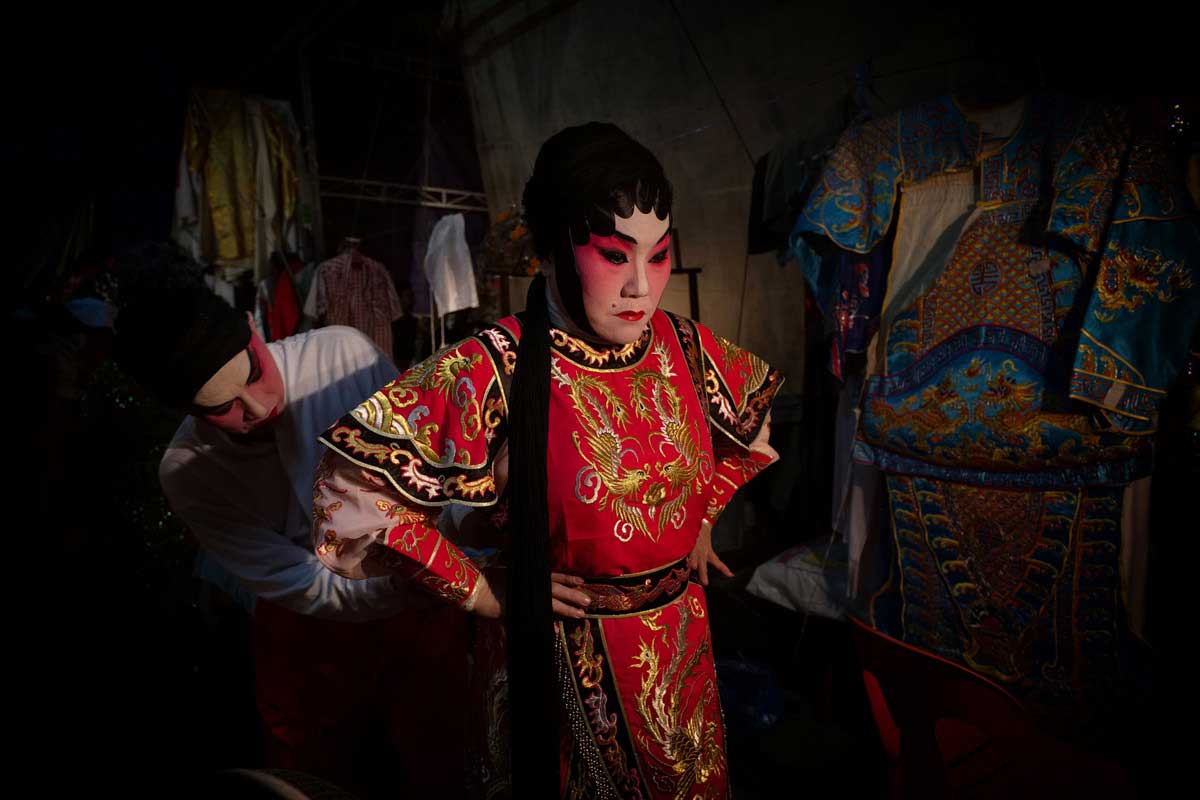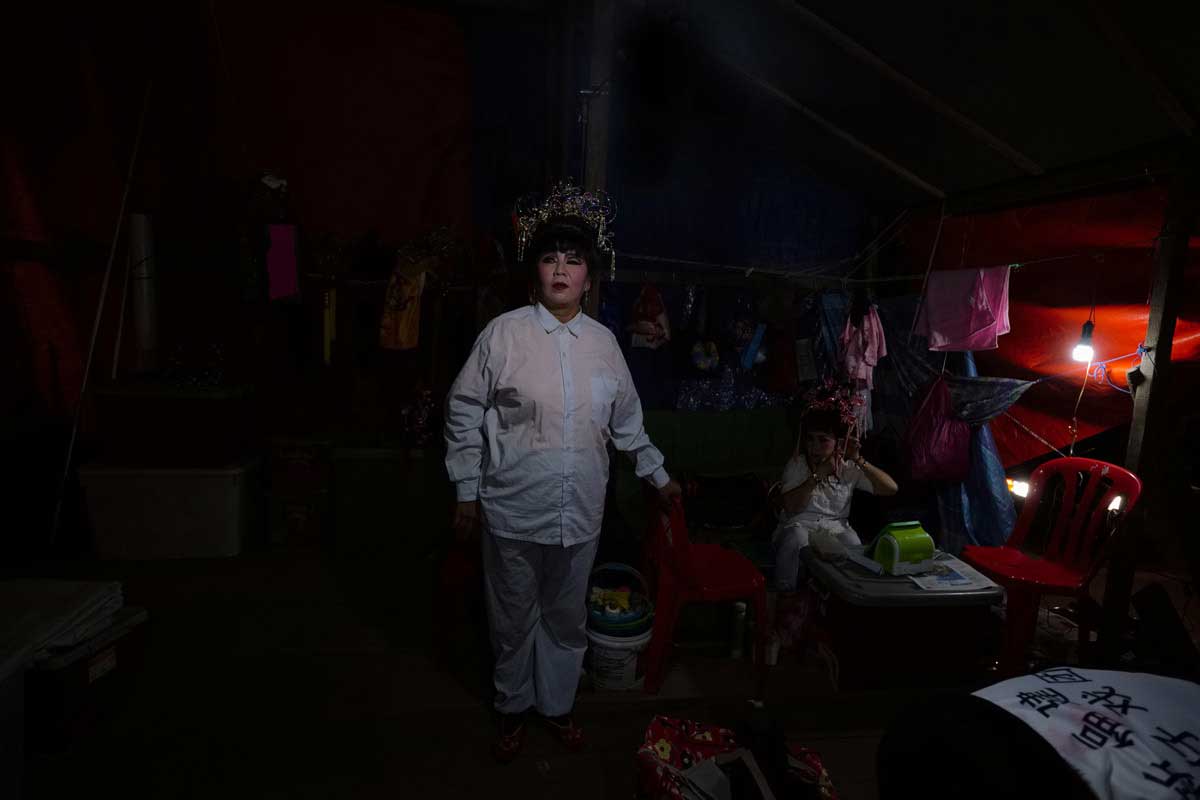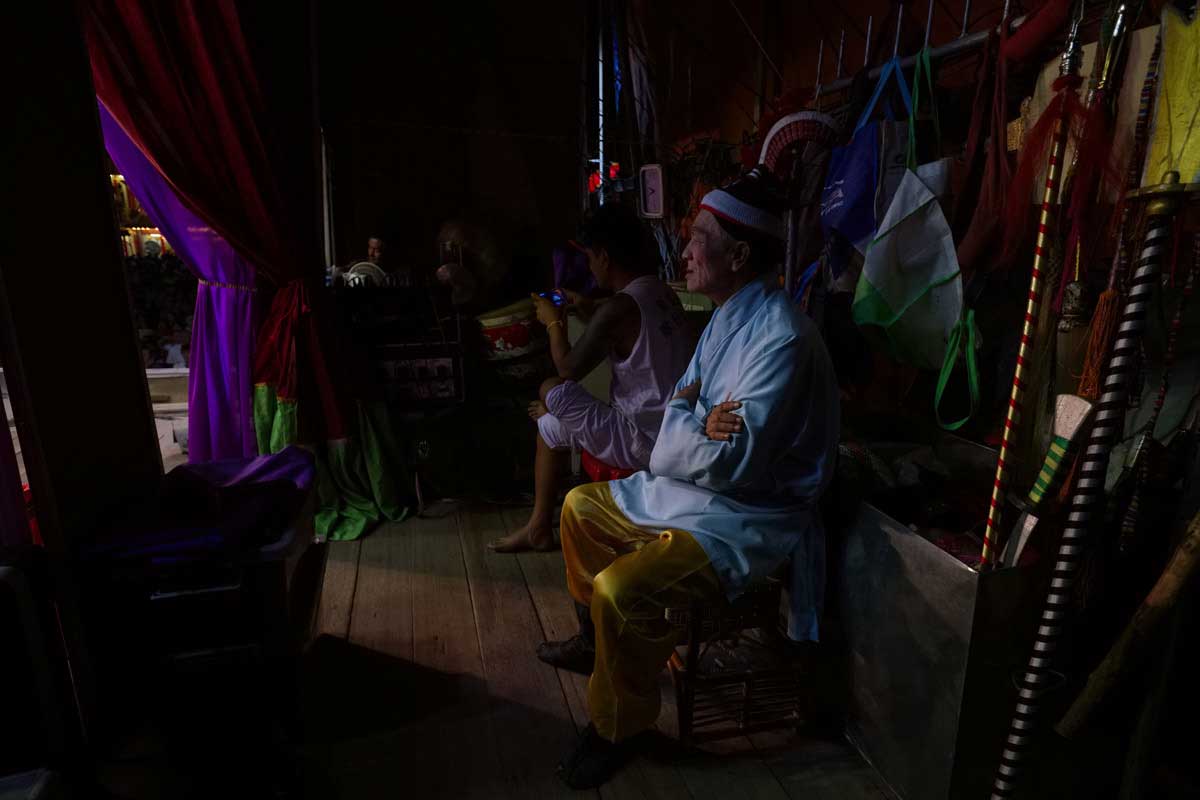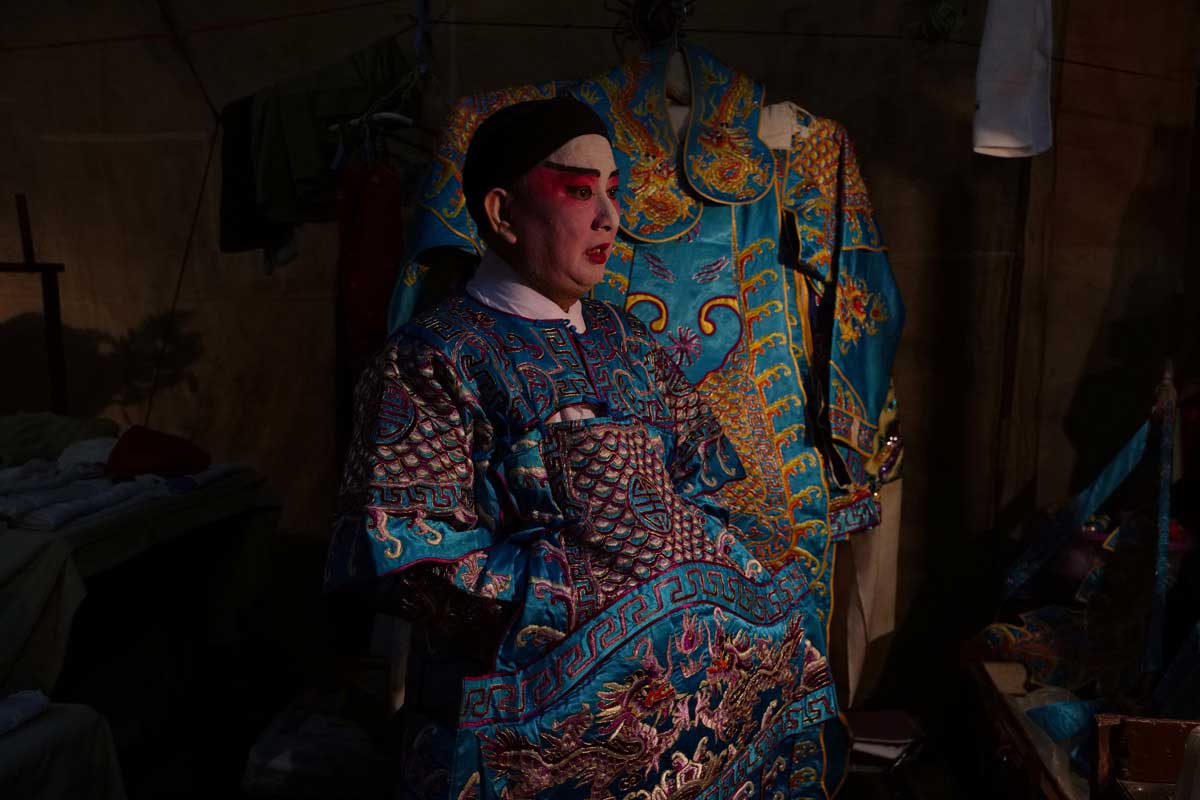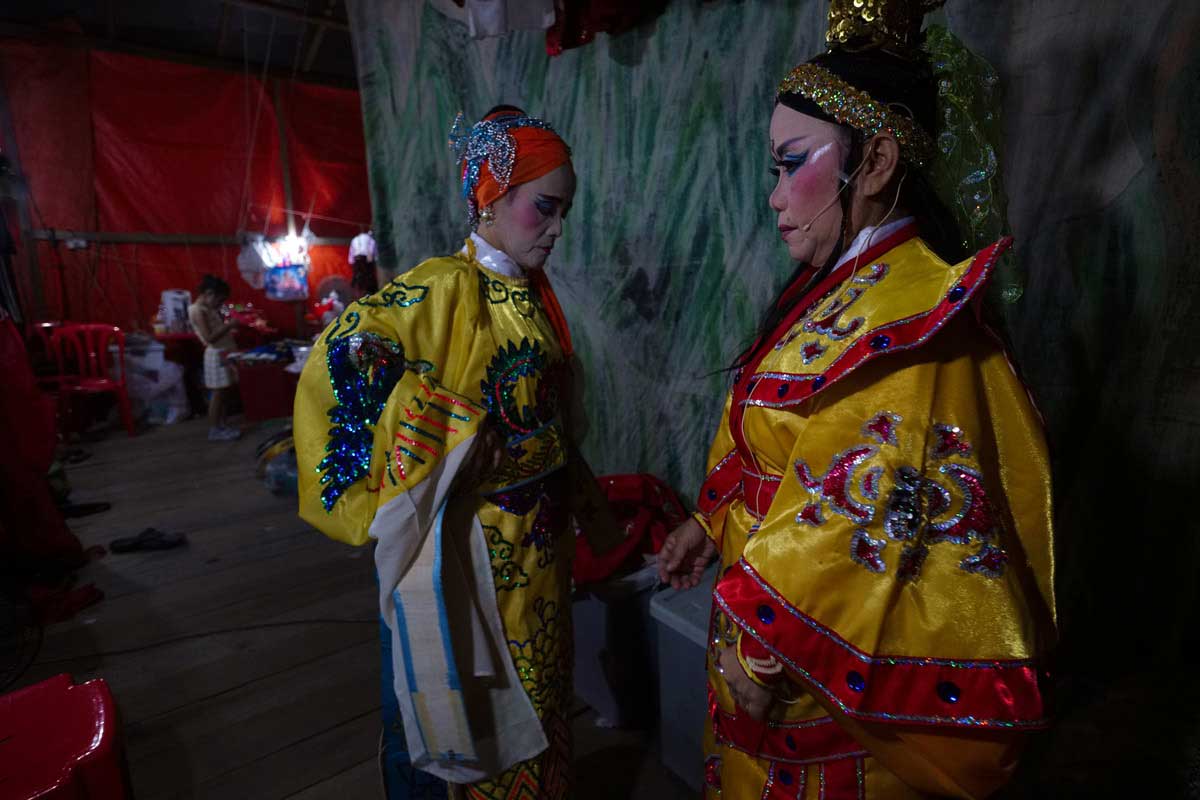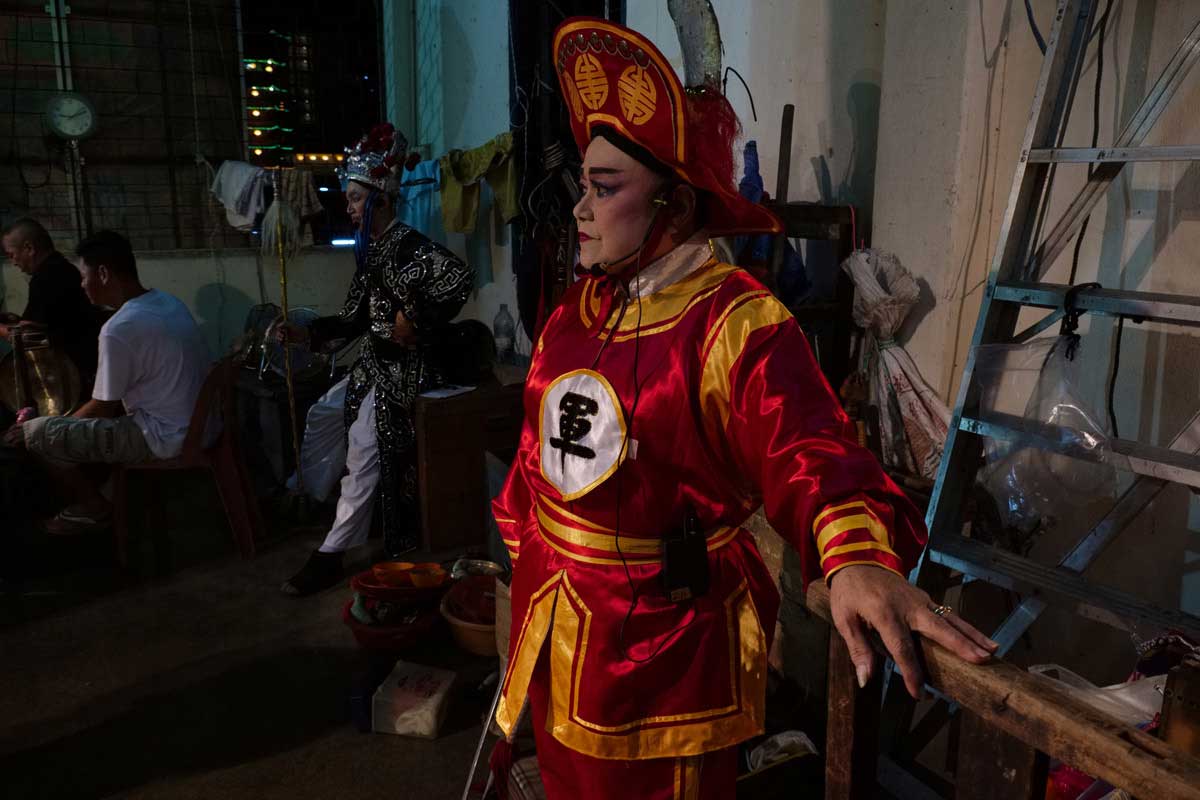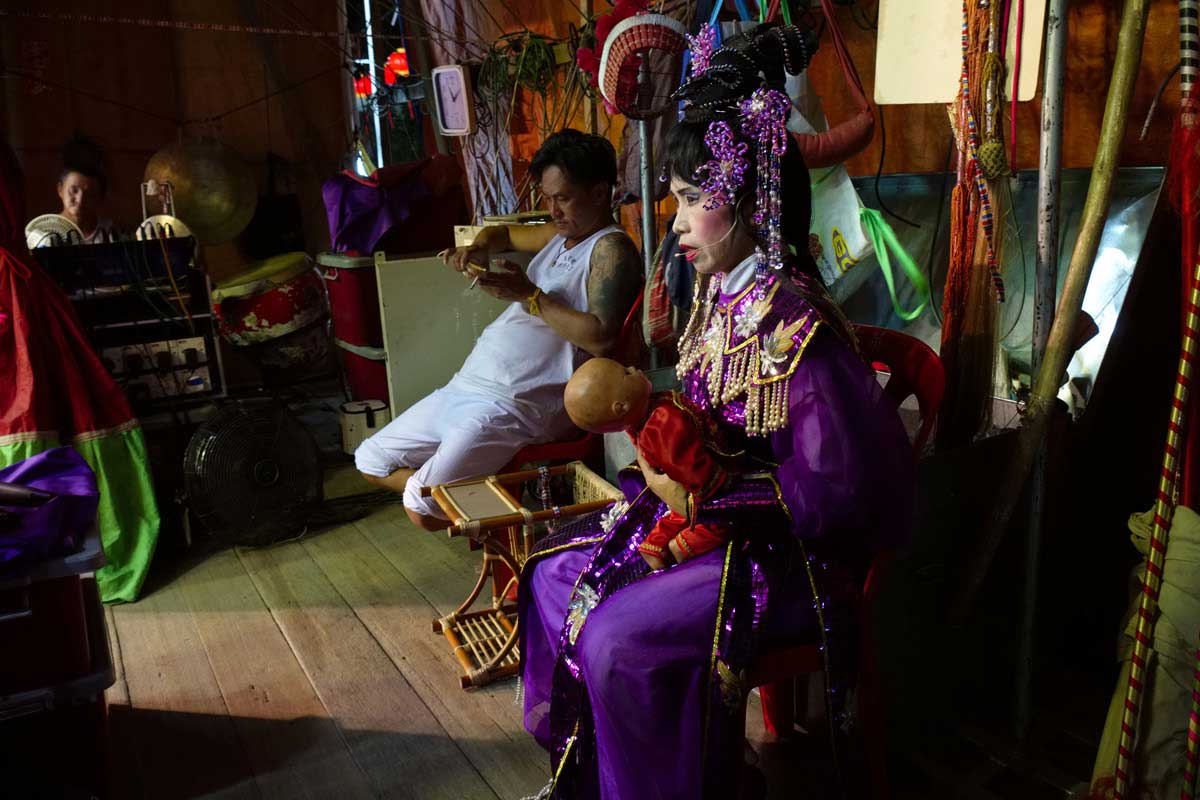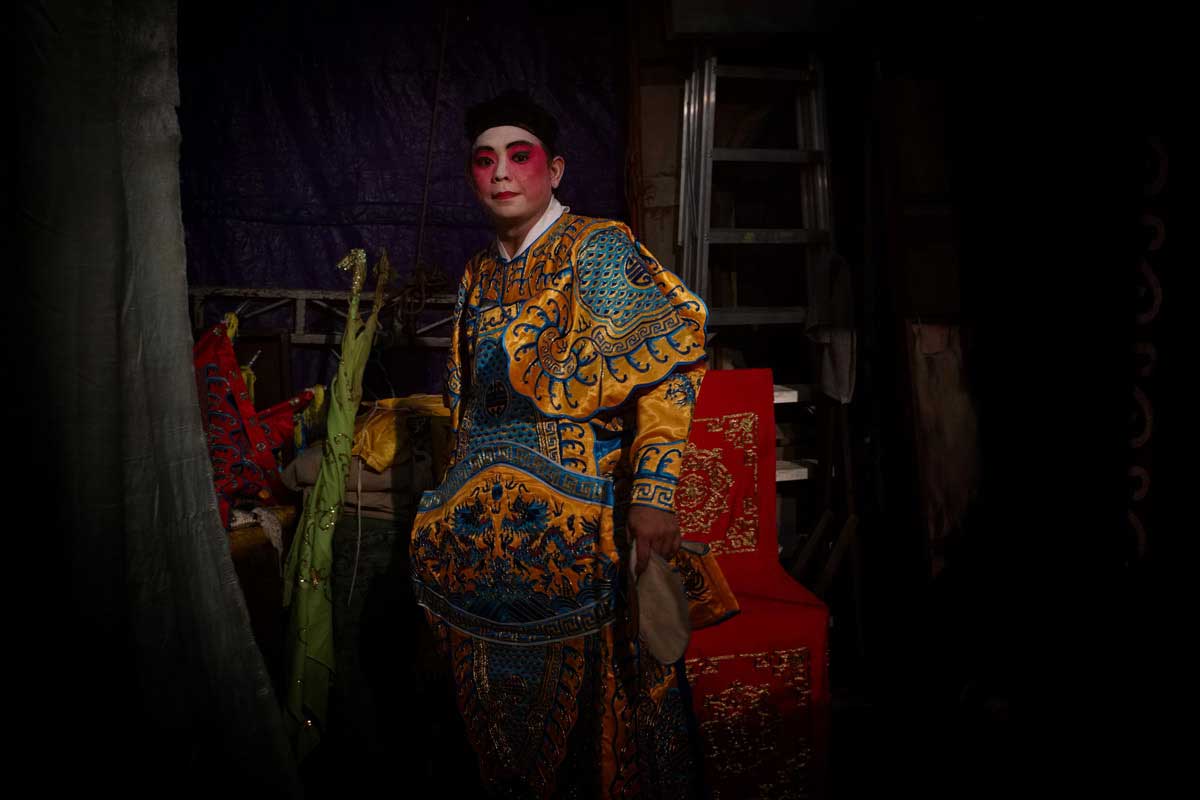In October 2017, I spent over two weeks in Kuala Lumpur documenting the Chinese operas that performed at various temples during the Nine Emperor Gods Festival.
It is widely acknowledged that Chinese opera (Cantonese, Hokkien or Teochew) in Malaysia (and elsewhere) is on the wane due to the lack of interest from a younger generation.
There are only 20 truly professional performers left in Kuala Lumpur. Those who are amateurs or part-timers number a little over 100. The popular troupes are in Ipoh and Kuala Lumpur, and are lucky if they get 100 days in performance bookings per troupe.The current rate for a troupe’s performance starts from RM3,800 (approximately $900) a night. A performance normally requires at least 30 people, including stage hands, musicians and a cast of actors. Salaries may range from RM50 ($12) for the role of an extra, up to RM200 ($48) for a supporting actress.The cost of costumes is mostly borne by the performers. For the main actress, a single costume can cost between RM500 and RM600 ($120-140). The costliest get-up will be for the emperor part which can cost up to RM3,000 ($700). This does not include headgear. The warrior’s headgear with long pheasant feathers can reach RM1,000 ($240).
Before and during Chinese religious festivals such as the Hungry Ghosts festival and the Nine Emperor Gods festival, these opera troupes live in the back areas of the stages that are specially erected. Much of the funding comes from business people and/or from temples.I chose to feature photographs made in the backstages. For the most part, the performers willingly accepted my presence despite my getting in their way more than once. I didn’t use artificial lights, and only relied on ambient light to accurately show the backstages as they really are.
About Tewfic El-Sawy
Based in New York City, Tewfic El-Sawy is a freelance photographer specializing in documenting endangered cultures and traditional life ways of Asia, Latin America and Africa. His images, articles and photo features were published in various magazines, and his travel photographs were featured by some of the largest adventure travel companies in the United States and Great Britain, as well as in multinational corporations’ art collections. His photographs have been acquired by a range of eclectic buyers; from the Standard Chartered’ Bank’s permanent art collection to Spike TV.
An ex-international banker, he brought his business background to bear and organized and led photo expeditions and workshops for photographers who shared his enthusiasm for unusual cultures, uncommon locations and lesser known festivals. He is the founder of the popular The Travel Photographer blog, he’s an instructor/faculty member with the Foundry Photojournalism Workshop, and gives travel and street workshops at the Travel Photographer Society (Kuala Lumpur).
Tewfic just published his third photo book Hầu Đồng: The Spirit Mediums of Viet Nam; a spiritual-cultural phenomenon in Vietnam recently recognized by the UNESCO as a Intangible Cultural Heritage. He is also working on a long term project on Chinese operas of the Chinese diaspora in South East Asia. [Official Website]










